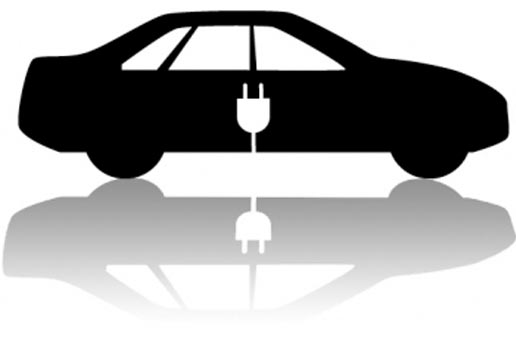
The technologies needed to begin seriously weaning the U.S. transportation system away from petroleum and toward alternatives such as hybrid and pure electric vehicles have made great progress, but harnessing them on a scale that would significantly lower greenhouse-gas emissions or oil imports is complicated by issues of choosing the right policies and of implementing needed infrastructure improvements.
This was a clear message from a high-level panel of experts who met last year at MIT to discuss the issues in a one-day symposium, whose conclusions were released as a report last week by the MIT Energy Initiative (MITEI).
The impetus for moving transportation systems away from petroleum is twofold, as MITEI Director Ernest Moniz explained in introducing the report: to reduce the nation’s dependence on oil imports, and to reduce the greenhouse-gas emissions that contribute to global climate change.
MIT Institute Professor John Deutch, who with Moniz was co-chairman of the symposium, said there were some clear areas of agreement among the group, who represented a diversity of fields and areas of expertise: “The predominant view was that if you had a strong carbon policy, many of the steps that would have to be taken” to reduce petroleum dependence would happen naturally. But given the present political realities in the U.S., he said, “We’re not going to have that, so the most desirable policy option is not in front of us.”
Another area of agreement, he said, was the need for a strong government policy in support of research and development in this area. While panelists disagreed on exactly how far such subsidies should extend into actual manufacturing, he said, there was a strong endorsement of continued government support for the development of petroleum-free transportation technologies. But much more than that is needed, he said. While it would be technically feasible to reduce U.S. greenhouse-gas emissions by 50 percent by mid-century, he said, the likelihood of the government enacting and maintaining the necessary policies over that period of time is “quite dim” due to political forces.
One key enabling technology involves modernization of the nation’s electric grid, enabling more real-time monitoring and dynamic control down to the level of individual buildings, because patterns of usage could change significantly if the recharging of electric vehicles grows at a rapid pace. At the same time, the batteries in electric or plug-in hybrid vehicles could be used as an extra short-term backup system, storing energy from the grid when there is an excess and delivering it back when needed, in order to flatten peaks in electricity use. This could eliminate the need for construction of some new power plants, but only if changes are made to the grid infrastructure to enable such uses, said Marija Ilic, a visiting professor in the MIT Engineering Systems Division.
John Heywood, the Sun Jae Professor Emeritus of Mechanical Engineering and former director of the Sloan Automotive Laboratory, said the report does a good job of summing up the complexities of the decisions facing this country and the world. In terms of figuring out which technologies — plug-in hybrids, fuel cells, biofuels or something else — would make the biggest dent in petroleum use, “the technology hasn’t developed enough to have clear answers,” he said. “We don’t know yet where we’re going to end up.”
All of the transportation technologies, both the conventional ones and the newer ones, are improving all the time, Heywood said, and the newer ones are getting better faster. But for now, those in the industry tend to see electrification — whether through plug-in hybrids or pure electric vehicles — as just a niche market, primarily because such vehicles are too expensive in their current form, and petroleum currently is not expensive enough.
Heywood said that recent developments in automotive technologies have improved fuel efficiency on average by about 1 percent per year, whereas projections of economic and population growth suggest worldwide fuel usage is increasing by about 2 percent per year — a disparity that is clearly not sustainable.
Yet-Ming Chiang, the Kyocera Professor of Ceramics at MIT and co-founder of battery company A123 Systems, said that battery technology has been improving faster than expected, as shown by the fact that projections of future battery costs have been dropping steadily. In addition, he said that automotive use is far more demanding than other applications, so even when batteries are no longer suitable for use in a car they could still have value for other applications such as backup power supplies for homes — potentially easing the cost further by providing a secondary market. “There will still be value after it’s ended its automotive life,” he said.
Moniz said he came away from the symposium more optimistic about battery technology and the prospects for significant reductions in battery costs, but more aware of the complexities involved in policy issues and in questions about how to develop the infrastructure changes needed for a significant shift away from petroleum.
On the policy front, the speakers agreed that the present situation consists of a hodgepodge of specific legislative incentives such as tax breaks, national standards such as vehicle-efficiency levels, and a wide variety of state regulations. “There really isn’t a defined national policy” with regard to curbing petroleum use or fostering an electrified future, Heywood said, “and we desperately need one.” He added, “If you really want change, it’s got to be pulled and pushed by broader policies with bite.”